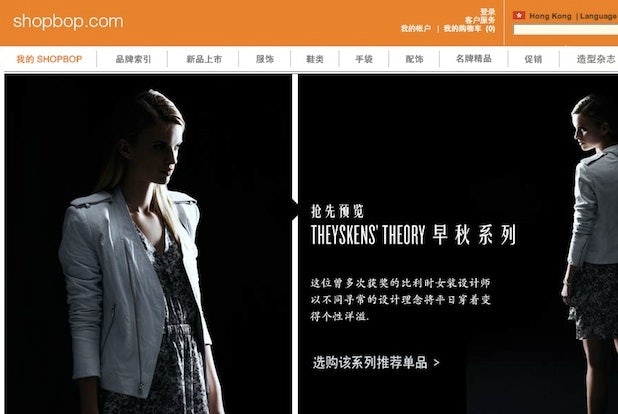
A few weeks ago, I had the pleasure of meeting the J. Crew team, who were visiting Hong Kong from New York. It’s no secret that the retailer has its sights set on Asia, but what interested me was their strategy to enter the market. Unlike other big players who are eager to jump headfirst into China’s murky waters by opening brick-and-mortar stores, J. Crew has decided to tread lightly by creating an online presence first.
When you look at the figures, going online first seems like a smarter option. According to the Boston Consulting Group, China is set to surpass the United States in 2015 to become the largest online commerce market in the world, with the total number of e-commerce shoppers growing to 329 million.
But while it’s easy to be taken in by the numbers, many people fail to realize that engaging the Chinese consumer is harder than it looks. So some interesting points came up when the J. Crew team asked for some advice.
First of all, the Chinese are not stupid – while they are relatively new to the Internet, they are also the most social shoppers in the world (you only need to visit Weibo to know that!) They will definitely cross-check prices against other sites, because price is more important to them than you might think. The biggest mistake retailers make is pricing items higher on their Chinese site than on their home site – I have one Chinese editor friend who only shops on one retailer’s US site because it works out to be cheaper, even when you add in shipping and US and Chinese taxes.
Speaking of Weibo, make sure you have an account. Contrary to popular belief, you can also update it in English. Post daily with new arrivals and tips on how to wear your products. Even better, engage users to comment on what they’ve bought and what they love. While most brands don’t encourage feedback on their sites (Burberry on Facebook for example), it’s important to get your customer to interact and engage with others. It will have a knock-on effect and get people talking -- and hopefully buying.

Variety and selection of merchandise are also imperative. Pre-conceived notions that Chinese love to wear red or buy accessories for gifting don’t exist anymore. Maybe customize in terms of sizing, but make your offerings as diverse as possible – we Asians love shopping in the US because there is so much more available in terms of styles, colors and sizes. We want something different that isn’t available elsewhere.
Another regular complaint I've heard is about the currency options on retailers' websites. If your website is in Chinese, why state prices in US dollars? The whole point of online shopping is convenience – it’s not convenient to get out a calculator each time you want to know how much a particular item works out to be in your currency.
Finally, we want our fashion fast; Shopbop has led the way with its free international delivery within two to three days, but same-day delivery is even better. It’s what put Net-A-Porter on the map in the West, after all.
Oh, and for the record, after only six months shipping to Asia, Hong Kong is already one of J. Crew’s top five biggest markets. Go figure.
Born and raised in Hong Kong, Divia Harilela has worked in the lifestyle and fashion media for over 12 years. Most recently she served as the fashion editor for Hong Kong’s leading English language newspaper, The South China Morning Post, where she remains a contributing editor. In March 2011, she founded
The D’Vine#
, one of Asia’s leading luxury and fashion websites.
